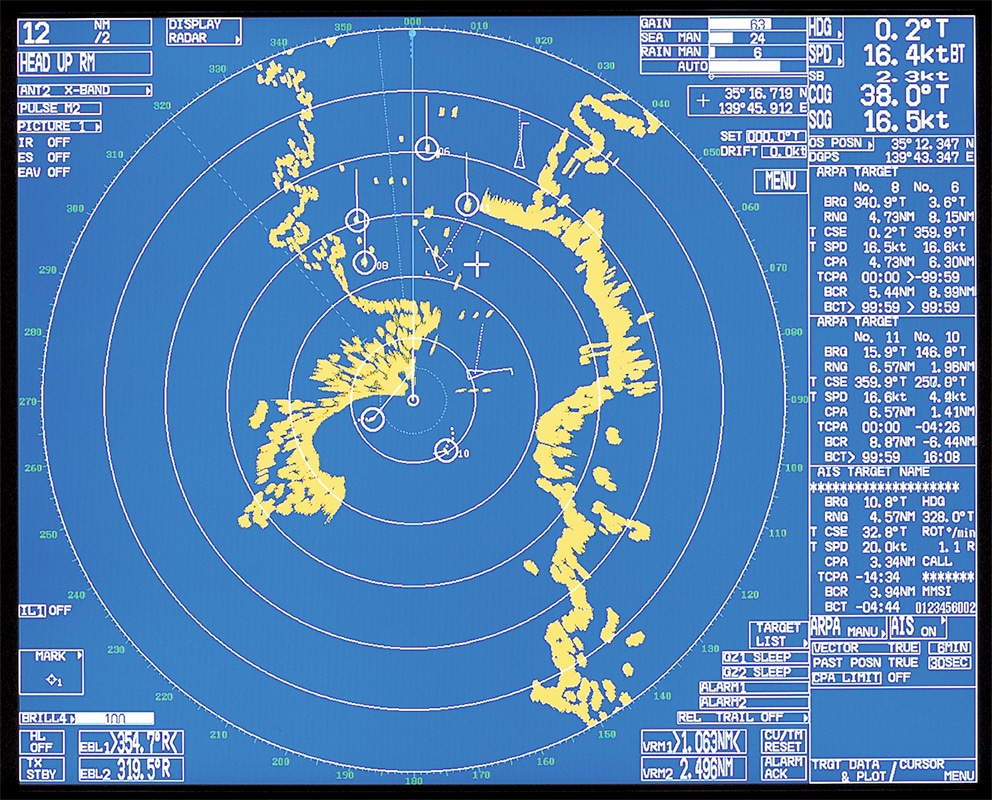
Q. How does the automatic identification system (AIS) work?
A. AIS signals are transmitted from vessels through VHF radio frequencies. An icon appears on the navigation displays of craft equipped to receive AIS information, indicating the transmitting ship’s location.
Clicking on the icon reveals the transmitting vessel’s position and visually tracks its course while providing you with its speed, heading and, if it is on a collision course with your boat, the time it will take to reach your location.
AIS can also broadcast a vessel’s name, radio call sign, length, beam, draft, rate of turn and, often, its destination, port of origin, and even if it is carrying hazardous material.
Recreational boats equipped with a Class B AIS transponder not only receive AIS signals but also have the ability to broadcast similar position and navigation information to other boats. This means your boat will appear as an unmistakably large object to other boats in your area receiving AIS. In addition, an audible alarm sounds when AIS-equipped vessels approach each other within an unsafe distance.
All About AIS
AIS (automatic identification system) gives you the power and ability to instantly know what other nearby boats are doing and even predict their movements, and it lets you know if they appear to be a pending threat to your boat.
Almost all commercial vessels are required to have operational AIS equipment before leaving port and must broadcast vital navigation information to all craft within several miles of their positions. While recreational craft are not required to have AIS, increasing numbers of pleasure boats are being equipped with AIS to take advantage of the many safety and navigational benefits it has to offer.
Another positive aspect of AIS is that you can receive its signal even when you are not able to see vessels that transmit AIS. As an example, when approaching the entrance to a harbor, you will often be able to “see” boat and ship traffic entering and leaving the harbor before you reach the channel entrance. In a way, AIS is acting a little like radar in that it shows you boat movements that may be hidden from visual sight behind obstacles or land formations.
You should be aware that AIS signals are not continuous but sent out at intervals. Commercial vessels using mandatory AIS Class A transponders transmit their position and navigation information every two to 10 seconds while underway and every three minutes when at anchor. Noncommercial Class B AIS, used more frequently by recreational boats, sends data every three minutes when at speeds of less than 2 knots and every 30 seconds at speeds over 2 knots. These transmitting intervals are for dual-channel AIS transponders. Single channel sets can take about twice the time to send signals. This is why AIS icons may appear to move in small jumping movements on your navigation screen.
AIS signals are transmitted at VHF frequencies. Class B AIS sets normally have a range of about 5 to 7 miles. Class A transponders used on commercial vessels have a more powerful transmitter and can reach out 20 miles or more.
With AIS, you can identify and call a specific vessel by its name or radio call sign, seen as an AIS object on your navigation screen, using your VHF to ask the vessel’s intention or request that it alter course.
In areas where traffic is heavy (in and around a commercial harbor, for example), your navigation display may become cluttered with AIS icons. It is suggested you choose models that have a filtering function so you can screen out targets that may be moving away from you, stationary boats at anchor, and other vessels that do not pose a threat.
AIS is definitely prime boating safety equipment, particularly when crossing traffic lanes in congested boating areas and when visibility is poor. AIS offers so much boating safety and navigation advantages that it is just common sense to have this technology on your boat.








